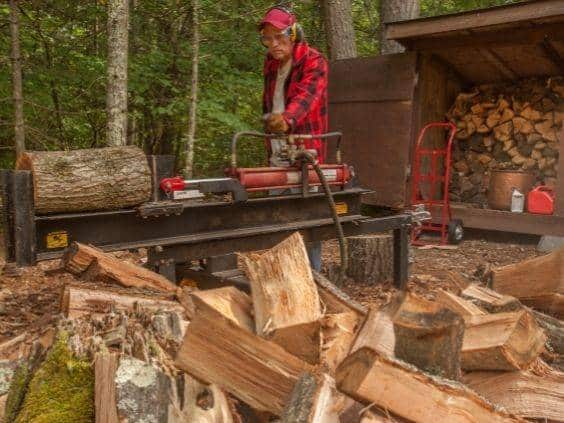Nothing is better than curling up next to a roaring fireplace during the winter months. Keeping you nice and warm and providing the perfect cozy accent for parties, this home feature is a wonderful thing to have. However, if you have a wood-burning fireplace, one of the biggest challenges of using it is ensuring you always have enough wood to keep it going. Try out these tips and tricks for cutting your own firewood so that you always have access to the resources you need.
Wear the Proper Safety Gear
If you’re going to cut your own wood, the first thing you should have is the right type of safety gear. Woodcutting is a dangerous activity on even the clearest of days, and you could struggle with it more depending on the time of year you choose to stock up. Wearing long clothing, safety goggles, and work gloves limits any direct contact with the wood you’re cutting. This reduces the likelihood of injury and ensures you make it through the process unscathed.
Use the Right Wood-Cutting Tools
Next, it’s important that you have the right tools for the job. Not just any tools can fell a full tree, and even fewer can split the wood after the fact. As such, you’ll want to have access to a chain saw, a log splitter, and an axe, at the very least. If you want to go with a more automatic route, there are several tips for using your log splitter like a pro to get the most out of your time.
Understand the Wood Length You Need
Before you get to splitting your wood, you want to make sure you know the length of wood you need. Wood length plays a key role in any fire you choose to build. The wood pieces need to not only fit in your fireplace but also fit together into a proper pile for use and storage. Because of this, making your logs all the same dimensions is vital. So measure the maximum length you need ahead of time and ensure you stick to it once you start the splitting process.
Store the Wood in a Dry Area
One of the most important tips and tricks for cutting your own firewood has to do with how you store it. Improper storage can cause your logs to rot, putting all your hard work to waste. The best storage practice is to stack your wood on top of a raised wood rack located in a dry area of your home or a shed. This way, the wood can start the drying process and you minimize loss.
Cutting your own wood is an incredibly rewarding way to warm your home. So use this advice to get yourself off to a great start.

